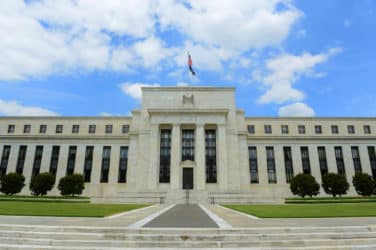
Equity capital markets growth, led by the special purpose acquisition company (SPAC) boom, heightened M&A activity, and improved performance by equities and spread financing products, was one of the largest contributors to a surge in investment banking revenues in 2021.
The Coalition Index for Investment Banking, which tracks the performance of the 12 largest investment banks globally, show overall revenues increased 6% year over year – a remarkable result given an unprecedented 2020.
*New* ECM, M&As and Equities Shored Up IB Revenues in FY2021 https://t.co/wAoVPCXzal via @CoalitionGrnwch @kmcpartland #MichaelTurner
— Coalition Greenwich (a division of CRISIL) (@CoalitionGrnwch) May 17, 2022
“Last year’s strong results reflect the diversity of the investment banking business model,” says Michael Turner, CIB Head of Competitor Analytics and Insights at Coalition Greenwich and co-author of ECM, M&As and Equities Shored Up. “The main sources of revenue growth in 2021 were entirely different from the volatility-driven, macro-products-led growth of 2020.”
ECM, M&A and Equities: The Star Performers of 2021
Investment banking revenue growth in 2021 came largely from ECM and M&As. Investment banking division (IBD) revenues touched a decade high, due, in part, to the volume of M&A deal completions and equity underwriting activity.
Equities trading revenues increased 22%, excluding the $10 billion drag caused by the Archegos Capital Management collapse. Including the Archegos hit, they were still up 5%.
“The meme stocks boom, which began early in 2021, had such a positive impact on both cash equities and structured derivatives volumes at the institutional level that, for the first time in a decade, the U.S. retail structured product market exceeded the European market in size,” says Kevin McPartland, Head of Research at Coalition Greenwich Market Structure & Technology and co-author of the report.
Meanwhile, a challenging trading environment in rates, normalization in credit and muted activity in currencies and emerging markets pulled down fixed-income revenues in 2021.
Is 1QFY22 a Signal of Things to Come?
The return of volatility suggests 2022 will more closely mirror 2020. For example, trading-side spread products that grew in 2021, such as agency residential mortgage-backed securities and high-yield credit, are down 30-50% in 1Q22.
Also, while volatility has hit the exotic end of rates, resulting in losses at some banks, vanilla or lightly structured options have done relatively well in 1Q22. More significantly, the surge in FX trading volumes, along with improved margins and spreads, means that most G10 and EM FX dealers are up 20–50% in 1Q22.
In equity capital markets, with IPO volumes dropping off, most dealer revenues are down more than 80% in 1Q22, reverting to pre-COVID levels and while M&A revenues increased 15-30% in 1Q22 new deal announcements so far this year are down 30-50%.
As for debt capital markets products, despite the rising rates, revenues are likely to remain relatively robust, since money is still quite cheap historically (for now, at least) and refinancing needs remain plentiful.
Source: Coalition Greenwich






